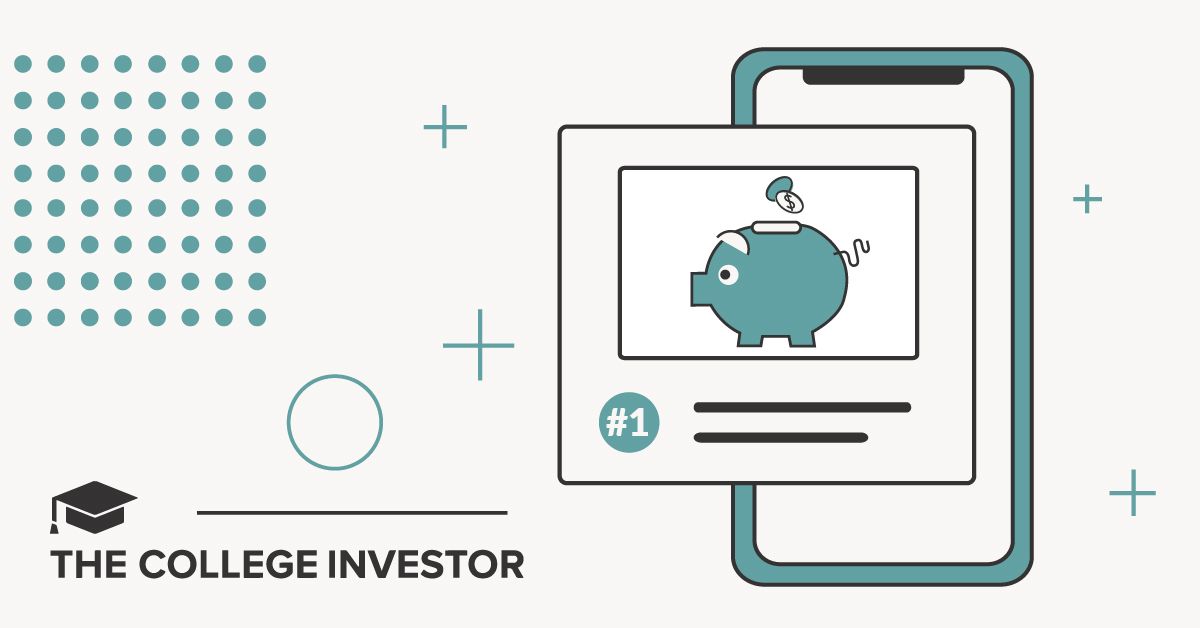
Automatic savings apps can be great tools to help you boost your savings.
Technology, in the form of smartphone apps, is here to help you. We’ve compiled the five automatic savings apps that can help you save and invest more without constantly having to think about it.
By utilizing these automatic savings apps, you won’t have to think about where you can cut back to save money. Of course you can make lifestyle changes on your own, like eating less at restaurants and cutting unnecessary subscriptions. But these apps help automate the savings process.
Note: The savings offers that appear on this site are from companies from which The College Investor receives compensation. This compensation may impact how and where products appear on this site (including, for example, the order in which they appear). The College Investor does not include all savings companies or all savings offers available in the marketplace.
1. Best Keep The Change App: Chime®
Many apps have a “keep the change” functionality where an app rounds all purchases to the nearest dollar. The “change” from the purchase goes into a savings or investment account. While many apps offer this feature, Chime is our favorite keep-the-change app.
Chime® offers a free banking account, and the savings account pays 2.00%* Annual Percentage Rate APY (right now). In addition to allowing you to “drop your change into a savings jar”, Chime makes it easy to save a portion of each paycheck.
When you don’t have a ton of money, every bit of savings helps. Over time, your Chime savings account may have enough money to allow you to start investing for retirement.
Read our Chime review here.
2. Best Automated Investing App: Wealthfront
If we’ve learned anything from David Bach’s Automatic Millionaire, it’s that automation is the key to wealth building. Thankfully, automatic investing has never been easier. Our favorite free brokerages and all of these roboadvisors make it possible to automatically save and invest for the future.
You can’t go wrong using any automated investment platform, but Wealthfront stands out as the easiest and most cost-effective automated investing platform. With a fee of just 0.25% annually, you can automatically invest for retirement, college savings, or in a brokerage account. Plus you can take advantage of Wealthfront’s super-high cash savings rate as well.
The app is not free, and they also have a text message based interface.
3. Best Micro-Investing App: Acorns
Micro-investing involves investing small amounts of money to help you build a large nest egg over time. Acorns offers a banking and investment platform that helps you invest your spare change for just $3 per month. On top of rounding up transactions (to enable small investments), you can invest as little as $5 at a time to help you build out your investment portfolio faster.
The $3 per month fee is fairly hefty when you’re getting started, but once you have $15,000 invested in acorns, the fee is less than most robo advisors (and it offers similar services).
They do charge $6 and $12 per month for even higher tier subscriptions though.
The Acorns app isn't worth the money if you’ll only use the spare change feature, but if you’ll invest $5 per day, Acorns is an incredible micro-investing app.
Check out our Acorns app review here.
4. Best App For Starting Your Emergency Fund: SaverLife
In general, building an emergency fund is the first step toward financial freedom. When you have an emergency fund, you've stepped away from a precarious financial ledge. With your emergency fund, you no longer have to live from check to check.
You can cover an unexpected expense without going into debt. SaverLife is an app that uses gamification to help users save more.
When you participate in challenges on the SaverLife app, you become eligible to win cash prizes ranging from $50-$1,000. On top of that, you’ll learn about finances as you save.
5. Best For Multiple Savings Goals: Current
If you’re working towards multiple savings goals, Current may be the right bank for you. Current allows you to use round-ups to automatically send money to savings pods. You can also set up automatic transfers from your spending account to your savings pods.
The savings pods pay interest as high as 4.0% APY on up to $6,000. With high-interest rates and easy savings mechanisms, Current is a great bank for a young adult who wants to save for a trip, a car, and a wedding all at once.
Other Automatic Ways To Save Money
Apps are great for helping you to save money, but you don’t necessarily need an app to automate your finances. These are four great ways to save money without downloading a new app.
401k Contributions
Contribute to your 401k (or another workplace retirement plan) to start investing and hopefully collect a match from your employer. If your employer offers a match, the 401k contribution is the best automatic way to save and invest in your future.
HSA Contributions
On top of the 401k, you may qualify to contribute to a tax-advantaged Health Savings Account (which can be an investment account). Putting money into an HSA is a great way to save for medical expenses and invest in the future.
Split Your Paycheck Into Multiple Accounts
Many employers allow you to split your paycheck between multiple accounts, including your savings. If you want $200 to go to your travel account every two weeks, you can ask your payroll company to take care of that for you.
Diverting part of your paycheck to a savings account will ensure that you’re saving money every time you earn a check.
Automatic Investment Contributions
No matter how much you earn, you can figure out a way to automatically invest some money each month. Setting up an automatic investment contribution at your brokerage company can help you save for retirement, build an accessible brokerage account, and otherwise build wealth.
When you set up automatic investment contributions, you don’t have to rely on willpower to cut back on your spending. As soon as the money leaves your account, you’ll adjust your lifestyle to account for the missing funds.
DISCLAIMERS
Chime is a financial technology company, not a bank. Banking services provided by The Bancorp Bank, N.A. or Stride Bank, N.A., Members FDIC.
* The Annual Percentage Yield (“APY”) is variable and may change at any time. The disclosed APY is accurate as of May 22, 2023. No minimum balance required. Must have $0.01 in savings to earn interest.

Hannah is a wife, mom, and described personal finance geek. She excels with spreadsheets (and puns)! She regularly explores in-depth financial topics and enjoys looking at the latest tools and trends with money.
Editor: Robert Farrington Reviewed by: Claire Tak


